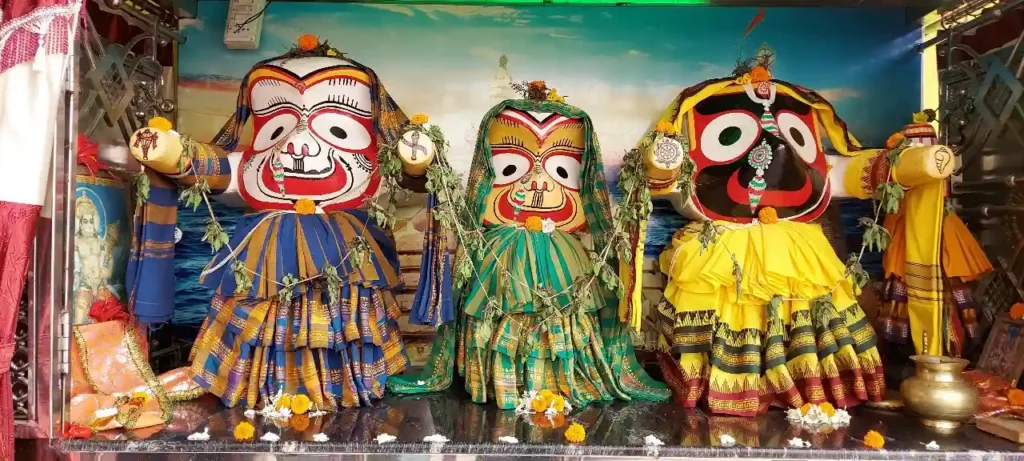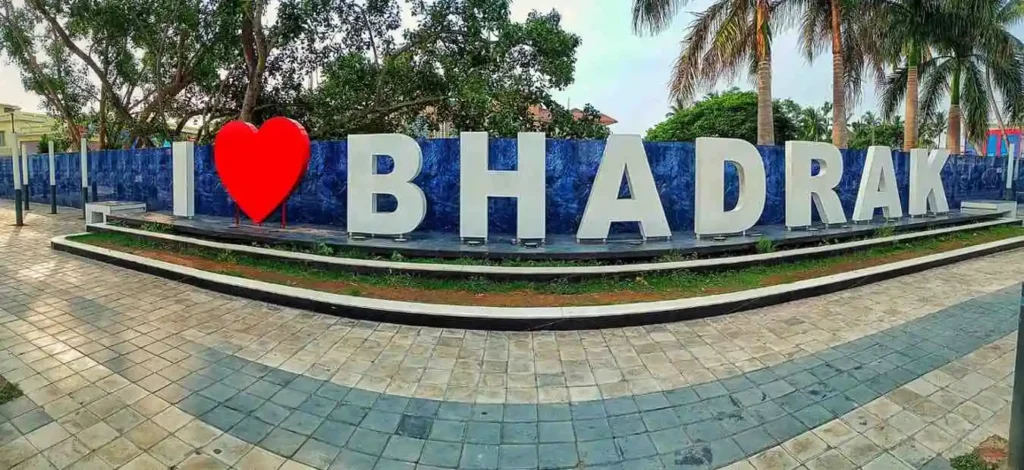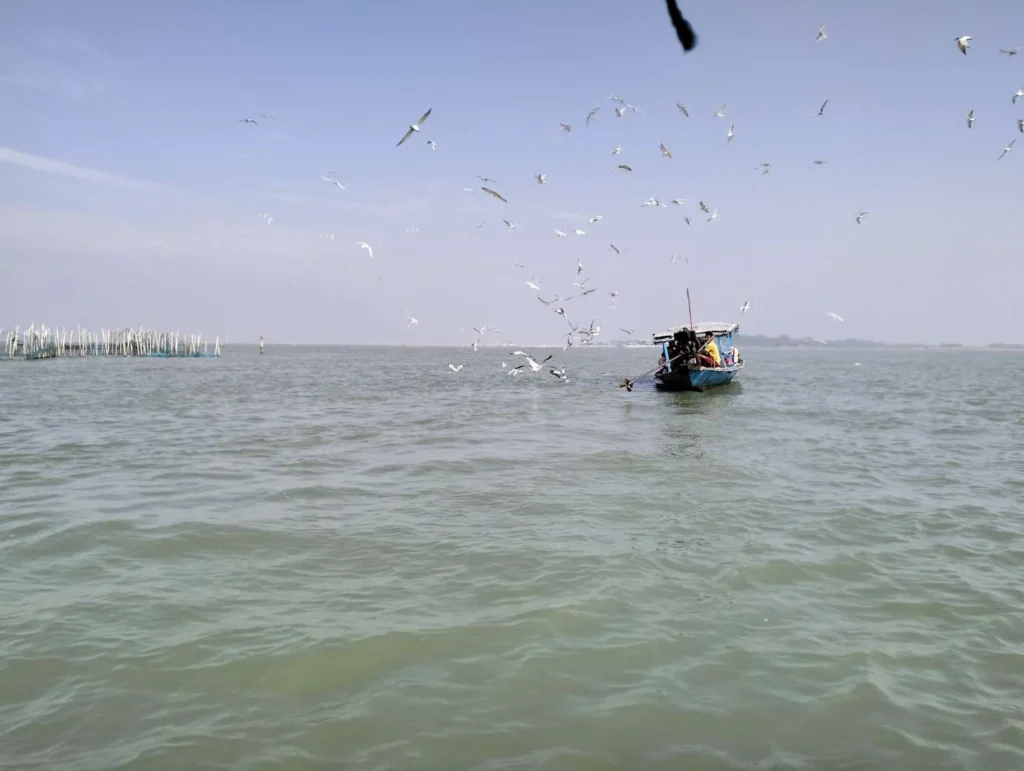In the land of sacred devotion, where chariots roll through the soul of millions, the festival of Rath Yatra concludes with an emotionally charged and spiritually rich ritual — Niladri Bije. Ultimately, this divine drama is not just a return; it’s a tale of love, longing, apology, and reunion between Lord Jagannath and Goddess Lakshmi. Consequently, it marks the completion of the grand Rath Yatra that begins with the Gundicha Yatra and concludes with Bahuda Yatra.
Therefore, let’s walk with the Lord through this homecoming journey filled with ancient tradition, emotional dialogues, and sweet reconciliation.
Therefore, let’s walk with the Lord through this homecoming journey filled with ancient tradition, emotional dialogues, and sweet reconciliation.
What is Niladri Bije?
Niladri Bije is the final ritual of the Rath Yatra festival, observed on the Asadha Shukla Trayodashi (13th day of the bright fortnight of Ashadha). Significantly, it marks the return of Lord Jagannath, Balabhadra, Subhadra, and Sudarshan to the sanctum sanctorum of Srimandir (Jagannath Temple) from their annual stay at Gundicha Temple.
More importantly, this isn’t just a physical return. It’s a symbolic and emotional reunion—especially between Lord Jagannath and Goddess Lakshmi, who had been left behind during the journey to Gundicha.
More importantly, this isn’t just a physical return. It’s a symbolic and emotional reunion—especially between Lord Jagannath and Goddess Lakshmi, who had been left behind during the journey to Gundicha.

The Divine Drama at the Lion's Gate
After the deities complete the Bahuda Yatra, they arrive at Srimandir. However, all gods are allowed inside—except Lord Jagannath. Why?
Because Goddess Lakshmi is angry. During Gundicha Yatra, the Lord left without informing or taking her along. As a result, as Lord Jagannath approaches the Singhadwara (Lion’s Gate), the doors are shut on her command. Thus, the divine drama begins.
Eventually, there’s banter, poetic apologies, and then the Lord offers a black Pata Saree and Rasagollas—the sweets of reconciliation. Finally, Goddess Lakshmi opens the door, forgiving Him, and allowing Him to return.
Because Goddess Lakshmi is angry. During Gundicha Yatra, the Lord left without informing or taking her along. As a result, as Lord Jagannath approaches the Singhadwara (Lion’s Gate), the doors are shut on her command. Thus, the divine drama begins.
Eventually, there’s banter, poetic apologies, and then the Lord offers a black Pata Saree and Rasagollas—the sweets of reconciliation. Finally, Goddess Lakshmi opens the door, forgiving Him, and allowing Him to return.
The Ritual Sequence of Niladri Bije
Step-by-step sacred procession back to the Ratna Singhasana.
1. Goti Pahandi – One-by-one Entry
The servitors carry each deity back from their chariots to the sanctum through a ceremonial procession via the Jay-Vijay Dwara.
2. Lord Jagannath’s Entry Denied
The angry Goddess stops Lord Jagannath while welcoming Sudarshan, Subhadra, and Balabhadra.
3. The ‘Bachanika’ – Mock Argument
A playful yet poignant verbal exchange takes place between the servitors of Lakshmi and Jagannath.
4. Rasagolla Pacification – ‘Manabhanjana’
To pacify Her, Lord offers Rasagollas—a symbolic offering of sweet apology.
5. Final Entry to the Ratna Singhasana
After forgiveness, Lord Jagannath is allowed inside and is seated on the Ratna Singhasana, ending the grand chariot festival.
Do You Know?
People in Odisha also celebrate Niladri Bije as “Rasagolla Dibasa” to mark this sweet reconciliation. This ritual made Rasagolla a part of Odisha’s cultural identity, long before its GI tag battle with Bengal.
The Myth Behind Lakshmi’s Anger
The story of Lakshmi’s fury originates from a mythological reference — the marriage of Rukmini and Krishna. According to legend, Lord Jagannath (Krishna) marries Goddess Lakshmi (in the form of Rukmini), but he leaves for Gundicha Yatra right after their symbolic wedding and abandons her before consummation.
Initially, she expresses her wrath on Hera Panchami by breaking a part of his chariot. Ultimately, she takes her final stand during Niladri Bije, where she demands emotional justice.
Initially, she expresses her wrath on Hera Panchami by breaking a part of his chariot. Ultimately, she takes her final stand during Niladri Bije, where she demands emotional justice.
Kanchana Mala and The Snake Connection
During Niladri Bije, Lord Jagannath sways while walking. This is due to the Kanchana Mala (a golden rope) tied around his waist. It’s believed to be none other than Kaliya Nāga, the serpent subdued by Krishna in Vrindavan. This myth adds depth to the Lord’s divine nature, linking Him to both compassion and justice.
People Also Ask (FAQs)
What is the meaning of Niladri Bije?
Niladri Bije is the final ritual of the Rath Yatra, marking the return of the deities to the Jagannath Temple after their annual visit to Gundicha Temple.
Why does the Goddess not allow Lord Jagannath inside the temple during Niladri Bije?
Because Goddess Lakshmi is angry that she was left behind. She closes the door, and only allows Him in after He offers Rasagollas and a black saree.
What is Rasagolla Dibasa?
Rasagolla Dibasa is celebrated in Odisha on Niladri Bije day, marking the reconciliation of Lord Jagannath and Goddess Lakshmi with the offering of Rasagollas.
What is the significance of Kanchana Mala in Niladri Bije?
The Kanchana Mala, tied to the Lord’s waist, symbolizes Kaliya Nāga, the serpent subdued by Krishna. It causes the swaying movement as the Lord enters the temple.
Who enters the temple first during Niladri Bije?
Madana Mohana and Ramakrishna idols enter first, followed by Sudarshan, Subhadra, Balabhadra, and finally Lord Jagannath.
Final Thoughts: Niladri Bije Is More Than a Ritual
It’s a divine love story. A tale of separation and reunion, anger and forgiveness, mythology and real emotion. The Lord who rules the universe bows down in love before His consort. Such is the humility of divinity in Jagannath culture.



Pingback: Suna Besha: Lord Jagannath’s Golden Glory on Bahuda Yatra